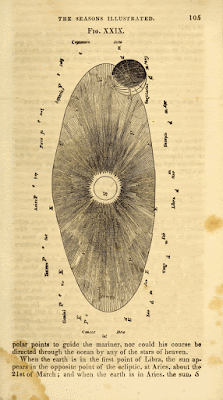 |
owl illustration by Edward Lear
|
 |
Edward Lear's illustration of a cat, Private collection promised to the Ashmolean Museum
|
The Owl and the Pussy-cat went to sea
In a beautiful pea-green boat,
They took some honey, and plenty of money,
Wrapped up in a five-pound note.
The Owl looked up to the stars above,
And sang to a small guitar,
‘O lovely Pussy! O Pussy, my love,
What a beautiful Pussy you are,
You are,
You are!
What a beautiful Pussy you are!’
 |
The Owl and the Pussycat by Edward Lear
|
 |
illustration of a lioness by Edward Lear
|
Poet Edward Lear (1812–1888), remembered affectionately for his delightful nonsense poems like 'The Owl and the Pussycat' or 'The Jumblies' is less well remembered for his exceptional, carefully observed scientific illustration but he was a talented and sought-after natural historian and illustrator. He believed in working from life, if not in the field, at least observing animals in zoos and menageries, rather than basing drawings of flora and fauna on museum collections of dead animals. He wrote “I am never pleased with a drawing unless I make it from life,” in 1831. He befriended zookepers to gain access and make measurements of animals; his work was praised by Charles Darwin and John James Audubon. He apprenticed with scientist Prideaux Selby, gaining confidence in his bird illustraions. His work shows a real understanding of how animals move and their 'personalities'which can be missing from work produced from drawing dead specimen. His first publication was a book about parrots, Illustrations of the Family Psittacidae or Parrots, published when he was only 19. It was the first book published about a family of birds. Then he worked for scientific illustrators John and Elizabeth Gould, helping him illustrate the birds of Europe and her illustrate birds for Darwin’s Zoology of the Voyage of H.M.S. Beagle, as well as producing illustrations for William Buckland, Thomas Bell, and William Jardine. His careful observation and illustrations lead Lear to identify several new species and several are named after him like Lear's macaw (Anodorhynchus leari), a large blue Brazilian parrot.
 |
Culminated Toucan, Ramphastos culminatus (mid 1830s).
Plate 1 in Lear's Monograph of the Family of Toucans. |
His nonsense poems came after, and in a sense, out of his scientific illustration. He was commissioned to illustrate the collection of parots in the menagerie of naturalist Edward Smith-Stanley, the 13th Earl of Derby at his home Knowsley Hall near Liverpool. He was treated like the help, and ate with the servants in the basement, but became a great hit with Lord Derby's grandchildren and began entertaining them with cartoons and limericks and this was how he began creating work for children. The Earl began inviting him to eat upstairs with guests and other nobles. He meanwhile gained a real reputation for his painting and even became the personal drawing instructor to Queen Victoria. So when he first began published Book of Nonsense, in 1846, he used a pen name to avoid tarnishing his reputation as a serious painter and scientific illustrator. He revealed his name only after his poems became a great success, a great surprise to him. This was a great boon to him as his ailing health and eyesight meant he could no longer work as a zoological draughtsman, and this new success came when he really needed it.
 |
| His scientific illustration and nonsense come together delightfully in his “Nonsense Botany” series, like this Piggiwiggia Pyramidalis! (Image courtesy of Houghton Library, Harvard University. MS Eng 797.1 [20]) |
 |
Edward Lear's Cockatooca Superba from the Nonsense Botany series
|
 |
Edward Lear's Crabbia Horrida from the Nonsense Botany series
|
References
Beth Marie Mole, Poetry and Pictures, circa 1830, The Scientist, November 2012.
GrrlScientist, Edward Lear featured at the Royal Society, The Guardian blog site, 2016
Donna Ferguson, How Edward Lear's artistic genius led to the Owl and the Pussycat, The Guardian, Sunday, 31 January, 2021.
Anna Lena Phillips, Serious Nonsense, American Scientist,.com
'Edward Lear', illusrtaion History resource from the Norman Rockwell Museum
Art, Nonsense and Science, The Biologist 64(6) p24-27

























